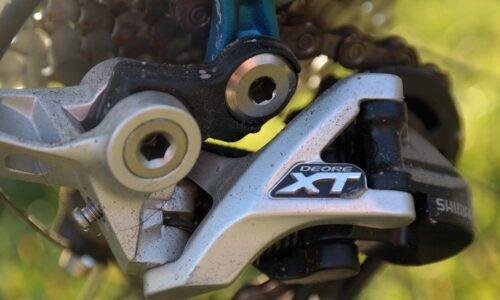When it comes to choosing a new groupset for your bike, a good place to start is comparing components from different manufacturers.
Brands put together various components that make up different levels of their groupsets. A popular comparison is the SRAM Rival vs Shimano 105, as they are direct competitors.
In this post, I am going to go through the differences between all the components to help you decide which groupset is best for you.
Between the two groupsets, you will find the Shimano 105 commonly fitted to bikes costing around $1,200 as standard. But, if you are looking to upgrade your current setup, you should expect to pay just $*** (check here). For the SRAM Rival 22 groupset, you are looking at spending $*** (check here).
Shifters
The way the shifters work on each groupset is the biggest differentiator between the two. One does not have an advantage over the other, but your choice is down to personal preference. Therefore, I recommend trying each one before you buy to make sure you make the right decision for you.
The design of the Shimano 105 sees you changing to a larger gear, by flicking the brake lever inward, while flicking an additional lever behind the brake lever, puts it into a smaller gear. The action is pretty effortless, due to the polymer-coated cables.
The SRAM system uses a shift paddle that sits behind the brake lever handles. You tap the paddle to change to smaller gears and push it further to select bigger gears.
If you have smaller hands, the Shimano 105 allows you to adjust the reach by 10mm to suit. But, SRAM Rival 22 gives you the ability to alter the reach of both the brake lever and the shift paddle.
If weight is a priority for you, at 350g the SRAM Rival shifters are lighter than the ones from Shimano that weigh in at 500g, giving you a 150g weight saving.
Rear Derailleur
With both the Shimano and SRAM systems, you can expect precise and repeatable gear shifting. But, you will need to choose the right rear derailleur for the cassette you use.
The Shimano 105 R7000 GS rear derailleur can take gears with up to 34-teeth, while the mid-cage version of SRAM’s Rival rear derailleur allows you to go up to gears with a maximum of 32-teeth.
When it comes to weight, a short cage Shimano 105 rear derailleur weighs 225g while the SRAM Rival 22 weighs 180g.

Front Derailleur
The SRAM version uses what the manufacturer calls Yaw technology. This system means that you do not need to alter the front derailleur’s position. The reason behind this is that when you change to a larger gear, the front derailleur cage rotates, so your chain does not rub on the side plates.
The Shimano 105’s front derailleur uses a cam design to give you a light and predictable action when changing gear.
The Shimano 105 front derailleur weighs 95g, while the SRAM Rival 22 weighs 89g with the guide to prevent the chain from coming off. Therefore, there is not much of a difference between the two. Although, the Shimano version is said to be a little awkward to set up.
Cassette
Both systems are 11-speed, but it is possible to use different cassettes for alternative gear ranges.
You can choose a SRAM cassette with a range of 11-36. But if you were to choose this cassette size, you would need to use a 1 x setup, with a suitable rear derailleur. Shimano now offers an 11-34 cassette to give you a wider range of gears than before.
The weight of the cassette all depends on the one you choose, but you can expect each of them to weigh in at roughly 260g.
Chain
Both SRAM and Shimano make smooth and reliable chains that should not give you too much trouble. However, the SRAM chain uses a PowerLock connecting link.
This makes it easier to set up, as you do not need a chain tool to break the chain.
Chainset (Crankset)
The choice of material for both the Shimano 105 and the SRAM Rival 22 chainsets is aluminum, and both save weight by being hollow.
The Shimano uses four arms to secure the chainrings and features uneven spacing between them. This spacing ensures that you get strength where it is needed the most.
The stiffer a chainset is, the more efficient your pedaling is. The Shimano 105 chainset is well known for its stiffness, which trumps the SRAM Rival. However, this does not mean the SRAM Rival 22 chainset is not a good one, and it still offers an excellent level of stiffness.
The Shimano 105 chainset is available in a standard 53/39-tooth option, a semi-compact 52/36, and a compact 50/34. You can buy SRAM’s Rival 22 chainset with 52/36, 50/34, or 46/36-tooth options.
Shimano offers enough options for cranks that suit most rider’s needs. You can choose between 165, 170, 172.5, or 175mm lengths. SRAM also provides those sizes, but with the addition of 167.5mm and 177.5mm options.
When it comes to axle options, you can choose between 24mm and 30mm with the SRAM Rival 22 chainset, while Shimano only offers a 24mm axle. Just make sure you get the correct bottom bracket for your choice.
The Shimano 105 chainset weighs 737g, while the SRAM Rival 22 is around 840g.
Brakes
The calipers you get with Shimano’s 105 groupset are excellent. This is because they give you lots of power and they are easy to modulate. You will struggle to find a better brake.
SRAM’s Rival 22 brakes are dual pivot and come with the excellent SwissStop brake pads. You can use either system with tires up to 28mm wide.
The SRAM Rival brake calipers weigh 300g, whereas the Shimanos are heavier at 379g.
Whichever system you choose, you get hydraulic disc brakes. These offer the advantage of more power than rim brakes while being less affected by wet conditions.
If braking power is at the top of your list, the Shimano 105 may be the one you want to choose. However, the SRAM brakes have a more progressive feel and are easier to modulate. Therefore, whichever you choose is down to your personal preference.
Overall
When it comes to SRAM Rival vs Shimano 105, their performance is quite similar to higher-end groupsets available from the same manufacturers. The main difference you would notice is that they are heavier than their more expensive counterparts.
I think that you would like the braking power provided by the Shimano system, but the shifting technology may sway you over to SRAM. therefore, which one you choose depends on where your priorities lie.

The performance of the two systems are pretty equal, but you may prefer how one works more than the other. Both are easy to get used to, but I recommend that you give each type a test ride before committing your hard-earned money.

Tom Fortune has been reviewing cycling products for several years from his home in the French Alps. As the owner of mtb-threads.com, he mainly reviews mountain bike products but also reviews road cycling products independently.





